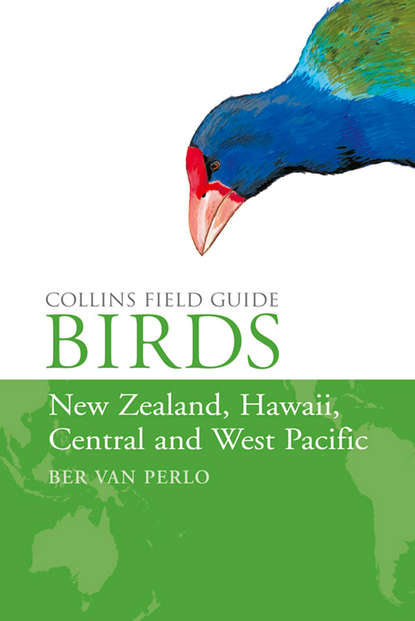По всем вопросам обращайтесь на: info@litportal.ru
(©) 2003-2024.
✖
Birds of New Zealand, Hawaii, Central and West Pacific
Настройки чтения
Размер шрифта
Высота строк
Поля
82 Hirundinidae (Swallows & Martins) & Zosteropidae (White-Eyes)
83 Zosteropidae (White-Eyes & Silvereye)
84 Zosteropidae (White-Eyes), Pachycephalidae (Whistlers) & Paridae (Tit)
85 Petroicidae (Robins), Colluricinclidae (Morningbird), Notiomystidae (Stitchbird) & Meliphagidae (Bellbird & Wattlebird)
86 Meliphagidae (Tui, Myzomelas, Honeyeaters & Mao)
87 Drepanididae (Parrotbill, Akikiki, Creeper, Alauahio, Akepa, Akekee, Iiwi, Akohekohe, Apapane & Poo-Uli)
88 Drepanididae (Ou, Palila, Nukupuu, Akiapolaau, Anianiau, Amakihis)
89 Emberizidae (Yellowhammer, Buntings & Sparrow), Fringillidae (House Finch), Thraupidae (Saffron Finch & Grassquit) & Oriolidae (Oriole)
90 Fringillidae (Chaffinch, Greenfinch, Goldfinch, Redpoll & Canaries) & Passeridae (Sparrows)
91 Estrildidae (Waxbills & Parrotfinches)
92 Estrildidae (Cordonbleu, Avadavat, Firetail, Silverbill & Munias)
93 Cardinalidae (Cardinal), Thraupidae (Cardinals & Tanager), Icteridae (Meadowlark & Grackle) & Dicruridae (Drongo)
94 Sturnidae (Starlings & Mynas)
95 Sturnidae (Starlings), Artamidae (Magpie), Callaeidae (Kokako & Saddleback) & Corvidae (Rook & Crows)
Acknowledgements
Endnotes
National and International Organisations
Bibliography and Further References
Appendix
Index
Copyright
About the Publisher (#litres_trial_promo)
Preface
This book should be regarded and treated as a field guide in which the necessary information, needed to identify a bird at the moment you observe it, is given in a condensed form. The low weight and small size thus achieved make it easy to carry the book around and consult in the field. Support of the identification of difficult species can be obtained in more detailed, regional bird books, which could be consulted at home, in vehicles, at your hotel, etc. Sound recordings from commercial CDs and DVDs and transferred to your iPod or other MP3 player can be an important supplementary aid in the field.
It is said that the painting in my books is ‘a bit sketchy, somewhat fast and loose, not finely finished’. However, if you see a bird in the field you see its uniform-coloured plumage parts as a single surface; painting each individual feather will give too much information unless the feathers form a pattern. I also find it difficult to draw straight lines, for example, when depicting the parallel primaries in a folded wing, or perfect circles when forming an eye, but this does not prevent a species from being quickly recognised. To me, it is essential that one can see that my work is hand-painted; I love the magic of small spots and streaks, applied with skill and luck that create a shape of something that looks quite different in reality when seen from nearby.
In the introduction I have paid attention to landscape and habitats, specific to the area, that determine which bird species can be seen; that is also why information is given about plate tectonics, as one of the main landscape-forming factors.
An effort was made to update this book to 2009, but a recent record could not be inserted, namely that of American Avocet Recurvirostris avocetta on Maui, Hawaii. Very similar to 39.9 but with black mantle and white scapulars.
In June 2010, just before finishing writing this book, the fourth edition of the Checklist of the Birds of New Zealand was published by the Checklist Committee Ornithological Society of New Zealand. Only the common names from this publication could be incorporated in this book as explained in the first paragraph of ‘Systematics and Names’.
Symbols, Abbreviations and Glossary
Symbols
Habitat: a set of environmental factors that is preferred by a bird
Vocalisation
Notes on range
Abbreviations
1st W – The plumage worn by a bird after moulting from juvenile plumage
2nd W – The plumage worn in the 2nd winter of a bird’s life
– Male
– Males
– Female
– Females
Ad. – Adult
Ads – Adults
Br – Breeding
N-br – Non-Breeding
C – Central
Cf. – Compare to
E – East(ern)
E. – Endemic
Esp. – Especially
Excl. – Excluding





